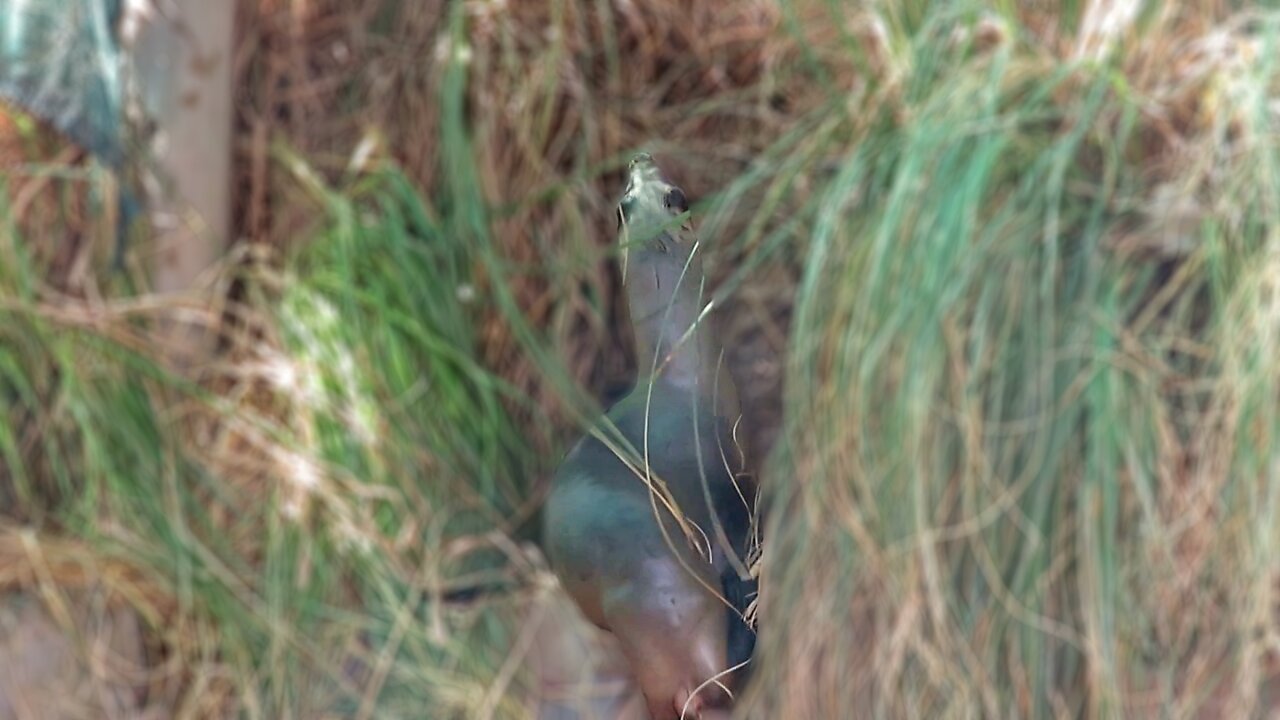Premium Only Content

Young rescued Sea Lion has a escape plan!
This funny young South American Sea Lion (Otaria flavescens) was rescued after it was found at the beach with hypothermia and malnourished. After being rehabilitated at a marine rescue center, it will be released back into the wild. Sea Lions are used to climbing rocks, and this one decided to try and climb out of its enclosure to hang out outside and try and steal some fish from the other animals. It sometimes succeeds, but not this time...
The South American Sea Lion (Otaria flavescens) is a Pinniped, a suborder that includes 33 other species of sea lions, seals and the walrus. Pinnipeds are marine mammals that have front and rear flippers. They have short fur and slit-like nostrils can be closed when they dive. The suborder has three families: Phocidae (seals), Otariidae (sea lions and fur seals) and Odobenidae (walrus). Phocids have ear holes but no external ear flaps, and small front flippers, moving on land by flopping on their bellies. Otariids, have external ear flaps and large front flippers, being able to to walk on land. Odobenids are one of the largest pinnipeds, and both males and females have tusks and vacuum-like mouths.
South American Sea Lions are heavy-bodied and stocky, and have a strong sexual dimorphism, with males reaching up to 350 Kg and 2.6 m in length, and females being no longer than 2 m and weighing 170 Kg. The male’s neck is more muscled than the females', with a patch of short hair around the head, resembling a lion's mane. Pups are born black above and paler below, and may present a greyish-orange coloration on the undersides, weighing 11-15 kg and are 75-85 cm long. They undergo a first molt at around one and two months of age, becoming dark brown, which will fade throughout its first year, becoming light brown.
It is a widespread species around the South American continent, being found in Peru, Chile, Argentina, Uruguay and Southern Brazil, and it has even been observed in Ecuador and Colombia. They also occur in the Falkland Islands. Adult males have been recorded at over 300 Km from the coast, but juveniles won't venture beyond 80 Km.
-
 0:31
0:31
NataliaCara
2 years agoAdorable rescued Crab-eating Fox pup wants to catch what's making the weird noise
258 -
 1:21:38
1:21:38
VapinGamers
3 hours ago $1.21 earnedTools of the Trade - EP04 Of Thumbnails and Titles, What's Important? - !rumbot !music
15.9K -
![Mr & Mrs X - [DS] Trafficking Empire – How Epstein Built His Web of Wealth and Deceit:Part 1 - Ep 5](https://1a-1791.com/video/fww1/f0/s8/1/o/k/J/d/okJdz.0kob-small-Mr-and-Mrs-X-DS-Trafficking.jpg) 52:11
52:11
X22 Report
4 hours agoMr & Mrs X - [DS] Trafficking Empire – How Epstein Built His Web of Wealth and Deceit:Part 1 - Ep 5
79.3K22 -
 1:13:18
1:13:18
Wendy Bell Radio
8 hours agoPet Talk With The Pet Doc
50.8K67 -
 5:54:39
5:54:39
dieseldesigns
7 hours agoExploring Labs In the DARK! // Abiotic factor
9.16K -
 LIVE
LIVE
BBQPenguin_
6 hours agoDragonball Z - The Android Saga
91 watching -
 LIVE
LIVE
Total Horse Channel
6 hours ago2025 URCHA Futurity | Derby & Horse Show | Saturday
31 watching -
 LIVE
LIVE
DynastyXL
6 hours ago🔴LIVE: Fortnite The Comeback Stream Starts Here🎃
36 watching -
 1:38:57
1:38:57
njgaming23
4 hours agoCoffee and Morning vibes #rumbletakeover
11K -
 1:09:19
1:09:19
Ami's House
2 days ago $18.45 earnedWhen Defending Israel Backfires: Are We Pushing Our Last Friends Away? With Karys Rhea
183K196